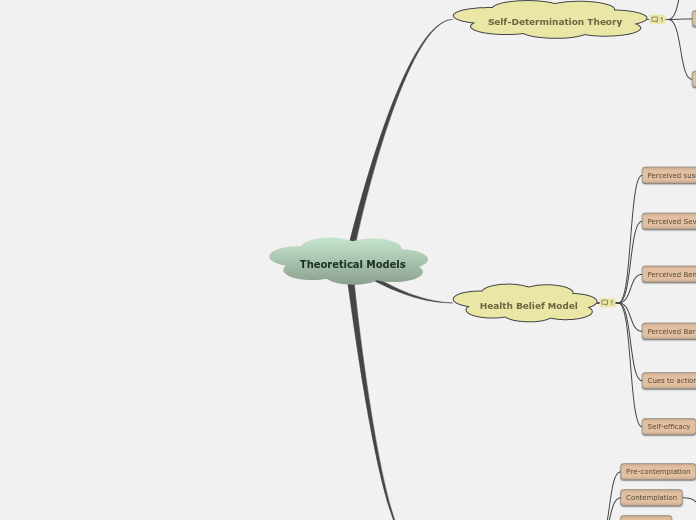Theoretical Models
Type in the name of the novel and movie you are going to compare and contrast.
Example: Great Expectations.
Transtheoritical Model
Restate your thesis while avoiding repetition.
- Explains an individuals readiness to change their behavior.
- Also called as 'stages of change' model.
- Six stages.
Termination
Stage that occures when a new behavior is permanentaly ingrained
Maintenance
Restate the differences between the book and the movie.
Stage where new behavior becomes habitual and requires less ongoing effort, but where relapse prevention is still important
Action
Stage where people are making a specific behavior change and can be supported by intervention strategies and guidelines
Preparation
Stage where people intend to take action in the immediate future and need the skills to do so
Contemplation
Stage where people are intending to change in the next 6 months and need to be motivated to do so
Pre-contemplation
Restate the similarities between the novel and the movie, but try to avoid repetition (this will help if you write an essay afterward).
Stage where people are not considering a health behavior change in the near future
Health Belief Model
Use point-by-point organization in the body section to present the characteristics briefly stated in the thesis.
This means that if you use this draft to write a compare and contrast paper, each characteristic will be introduced in a separate paragraph.
A frame work for motivating people to take positive health actions that uses the desire to avoid a negative health consequence as the prime motivator.
Self-efficacy
ex:I am confident that I can carryout the recommended treatment successfully
Confidence in ones ability to perform an action
Cues to action
ex: prompt to remind about taking medication on time
Stimuli to trigger the decision making process
Perceived Barriers
ex: barriers to medication adherence including cost, side effects, etc.
Ones belief regarding the effectiveness of various actions available to reduce disease threat
Perceived Benefits
ex: I believe that the benefit of the recommended treatment will outweigh the costs
Ones belief in the efficacy of the advised action to reduce risk or seriousness of impact
Perceived Severity
ex: I believe that the disease is serious
Ones belief of how serious a condition and its consequences are
Perceived susceptibility
ex: I am susceptible to the disease
How is the movie different from the novel?
Type in a short explanation. Use 'like', 'same as' or 'similar' for comparison, and 'unlike', 'differ from' and 'although' for contrasting.
Ones belief of the chances of getting a condition
How is the novel different from the movie?
Type in the answer. Use 'like', 'same as' or 'similar' for comparison, and 'unlike', 'differ from' and 'although' for contrasting.
Self-Determination Theory
The introduction provides background information for both the book and the movie.
- Theory of motivation and personality
- People are motivated to grow and change by three innate and universal psychological needs.
- Suggest that people are able to become self-determined when these three needs are fulfilled.
Relatedness
Create a thesis statement in which you briefly compare and contrast the book and the movie.
I matter to others
The desire to care for and feel connected to others
A sense of belonging
Which are the similarities between the book and the movie?
Type them in. Example: Great Expectations the book and the movie have very similar plots.
Autonomy
Congruent within yourself
Self-endorsed
The desire to self-initiate and self-regulate own behavior
Type in the name of the main character.
This has to be the same for both the book and the movie.
Competence
Essential to wellness
A mastery of things important to you
The desire to feel effective in attaining valued outcomes

